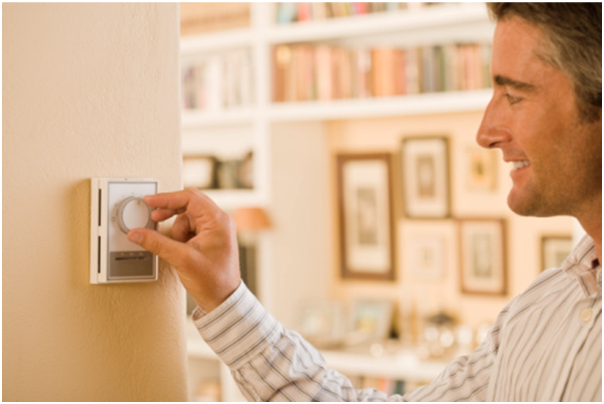If your home isn’t being heated or cooled to your preferences, the trouble might be in the thermostat – not your HVAC unit. Incredibly small devices to wield as much control as they do. And when something goes wrong at the box, everything else is affected. In a way, it’s the brain of the whole system.
In some homes, the thermostat has been in service for years and looks no more technical than a box with a dial or lever. But some newer models are as complex as a high-tech home security system. Whichever style you have, here’s how to correct some of the most common problems that you may encounter:
Thermostat is Mounted in a Bad Location
There’s a science to choosing the location of a thermostat. And while it might not be a precision science, choosing the wrong location can create problems such as rooms that are too warm or too cold, and an HVAC unit that seems to respond more slowly than it should.
Thermostats should be located away from direct sunlight, drafts and HVAC registers. Anything that directly alters the temperature of the thermostat without changing the temperature of the whole room affects the performance of the thermostat. A professional installation company can relocate the thermostat for you in short order.
The Unit is Dirty Inside
A dirty thermostat can lead to all sorts of problems, the most common of which are inaccurate readings. If you find yourself constantly adjusting the temperature but never getting it quite right, a dirty unit could be the culprit.
In most cases, the thermostat cover pops off with either a gentle tug or by prying. Once it’s open, use a small brush, such as a toothbrush or small paintbrush, to clear away dirt and debris.

If the thermostat is more than 10 years old, it’s time to think about a new one.
It’s Past its Prime
Nothing lasts forever, including your thermostat. While they can last longer than a typical HVAC unit, there comes a time when they all need replacement. Inconsistent temperatures in the home are a big indicator that it’s time to upgrade. If your thermostat is an older style with mercury inside, switching to digital might help improve accuracy.
A new thermostat ranges in cost from $20 for a manual style to a few hundred for a top-of-the-line, programmable, digital model. If yours is getting older, there’s a new thermostat to fit any price range.
Bad Wiring and Loose Connections
All thermostats have wiring, whether or not they’re digital. Wiring between the thermostat and the HVAC system is how they communicate. When bad wiring causes thermostat failure, the heat and air unit can’t function properly or at all.
Whether your model is a mechanical style or newer digital, check the wiring to be sure all terminals are connected. On a digital model, also check for battery backup, if it has one for the digital display.
Thermostat is Off-Level
Mechanical thermostats won’t work properly if they’re not level. This can cause erratic temperatures in the home, where the temperature adjustments that you make don’t match the actual temperature indoors.
Leveling a thermostat is a quick and simple repair. Just set a small level on top of the unit, and adjust it one direction or the other until the level’s bubble is centered.
If you’re not comfortable troubleshooting your thermostat, a pro can handle the job quickly.
Heat Anticipator Needs Adjustment
Another element of mechanical thermostats is the heat anticipator. This feature prevents an HVAC unit from switching on and off too often when the room temperature comes close to the thermostat temperature setting. If it’s out of adjustment, the short cycles may mimic a bigger problem at the unit.
Inside the thermostat, you’ll see a triangular pointer situated over a scale that’s shaped like a part of a dial. Moving the pointer closer to the lower number setting creates shorter “on cycles,” which turn off the heat sooner. In the opposite direction, the burner stays on longer.
The thermostat is how your HVAC unit knows what to do. Without it, there’s no direction, no parameters, and no reason to switch off or on. It’s easy to see how a problem with this little device might make you believe that there’s a major problem with the unit.
Fortunately, thermostat adjustments are often simple. And if you find that minor repairs have little or no effect, replacement isn’t difficult, either. Just follow the wiring diagram with the new unit, or call a pro to set it up for you. In no time, your system will in good working order again.

